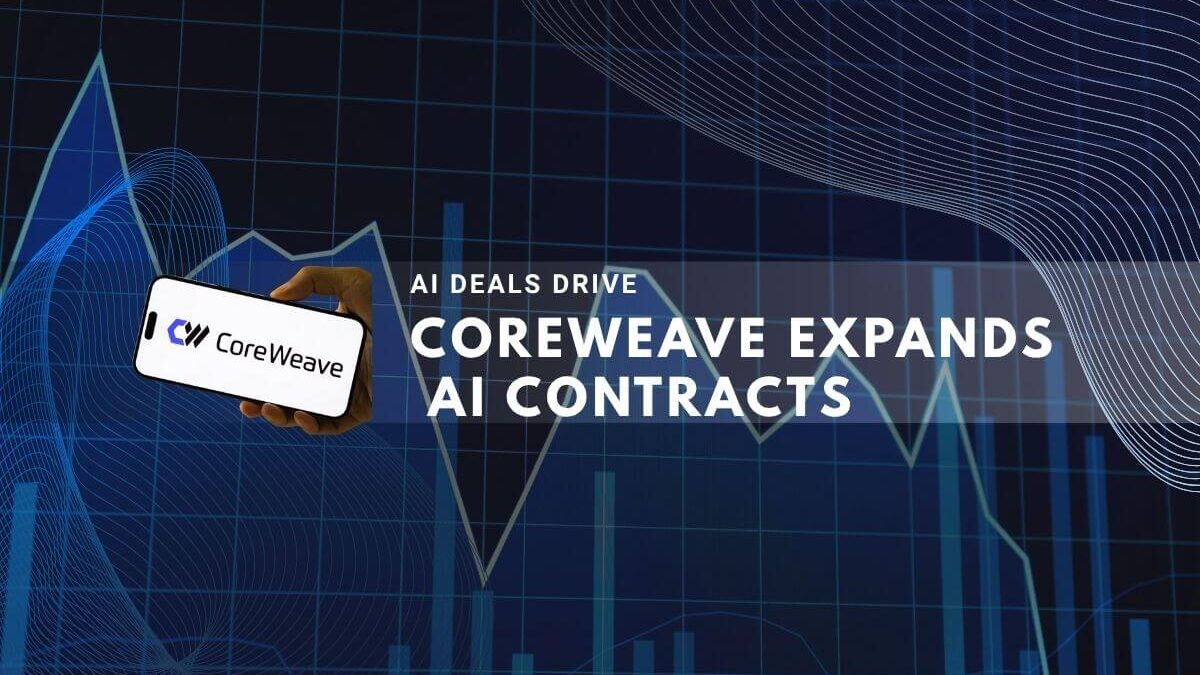CoreWeave (NASDAQ: CRWV) shares have surged approximately 264 percent this year through multi-billion-dollar cloud infrastructure deals with Meta Platforms and OpenAI, while the company trades at $138.43 as of October 11, 2025, substantially above its $40 initial public offering price in March.[1][2][3]
Meta Infrastructure Partnership and OpenAI Expansion
On September 30, 2025, CoreWeave announced a $14.2 billion agreement to provide Meta Platforms with GPU compute capacity through December 2031, with an option to extend into 2032. The contract grants Meta access to Nvidia GB200 NVL rack systems managed by CoreWeave. The company also expanded its OpenAI partnership in September, increasing the total contract value to $22.4 billion through an additional $6.5 billion commitment.[2][3][4][5]
The Meta deal marks a strategic diversification for CoreWeave, which previously faced concentration risk from its reliance on Microsoft and OpenAI as primary clients. The agreement positions CoreWeave to expand its data center capacity beyond its existing customer base.
Read Also: Three High-Yield Dividend Stocks Backed by Analyst Consensus
Stock Performance and Trading Activity
CoreWeave shares jumped 12 percent in the trading session following the Meta announcement on September 30, 2025. The stock reached a high of $187 in June 2025 before pulling back, then recovered approximately 50 percent over the past month through early October. As of October 11, 2025, CRWV trades at $138.43, reflecting a market capitalization of $71.76 billion.[1][6][7]
The stock trades at 14.38 times forward sales, a premium valuation compared to industry peers, reflecting investor expectations for continued AI infrastructure demand.
Analyst Ratings and Price Targets
Analysts maintain a Moderate Buy consensus on CoreWeave shares as of October 2025. Price targets range from $69.97 to $142.33 across multiple research firms, reflecting divergent views on the company’s valuation and execution risk. Several analysts issued upgrades following the Meta announcement, citing improved revenue visibility and reduced client concentration.[1][8][9]
Investment analysts project 2025 revenue between $5.0 billion and $5.8 billion, with 2026 estimates ranging from $10.7 billion to $14.7 billion. Profitability is expected by 2027 as the company scales operations.
Ownership Structure and Stakeholder Composition
As of October 2025, CoreWeave’s ownership structure shows broad distribution across investor categories:[1]
- Public companies and individual investors: 59.39 percent
- Other institutional investors: 18.63 percent
- Insiders: 17.74 percent
- Exchange-traded funds: 2.48 percent
- Mutual funds: 1.76 percent
CW Opportunity LLC holds the largest single stake at 7.98 percent. Jack D. Cogen, a company insider, holds approximately 4.80 percent of shares and has conducted recent insider selling transactions.
Core Scientific Merger Vote Scheduled for October 30
Core Scientific (NASDAQ: CORZ) shareholders are scheduled to vote October 30, 2025, on a $9 billion all-stock merger with CoreWeave announced in July. Under the agreement, Core Scientific would become a wholly owned subsidiary of CoreWeave, with shareholders receiving 0.1235 shares of CoreWeave Class A common stock for each Core Scientific share.[10][11][12]
Two Seas Capital, which holds approximately 6.2 percent of Core Scientific shares and ranks as the largest active shareholder, publicly opposes the merger. The investor argues that the exchange ratio undervalues Core Scientific and fails to capture the company’s growth potential in high-performance computing co-location.[11][13]
According to CNBC reporting on October 10, Core Scientific shareholders are expected to reject the merger at the October 30 vote. CoreWeave CEO Michael Intrator stated in early October that the company will not revise its offer and will continue its relationship with Core Scientific regardless of the vote outcome.[14][15]
Second Quarter 2025 Financial Results
CoreWeave reported second quarter 2025 revenue of $1.21 billion on August 12, 2025, representing 207 percent growth year over year. The company posted an adjusted net loss of $290.5 million as it invests heavily in infrastructure expansion. CoreWeave’s contracted backlog totaled $30.1 billion as of June 30, 2025, providing visibility into future revenue streams.[16][17][18]
The company operates GPU-optimized cloud infrastructure specifically designed for AI training and inference workloads. CoreWeave competes with established cloud providers including Amazon Web Services, Microsoft Azure, and Google Cloud, as well as specialized AI infrastructure firms such as Nebius.
Market Position and Competitive Landscape
CoreWeave has transitioned from cryptocurrency mining operations to become a specialized provider of GPU cloud services for artificial intelligence applications. The company’s infrastructure features the latest Nvidia GPU systems, including the H100 and GB200 architectures optimized for large language model training and inference.
The rapid growth in CoreWeave’s valuation to $60 billion has prompted industry discussions about circular financing patterns, as many AI companies invest in and purchase services from each other. Analysts continue monitoring whether the elevated valuations reflect sustainable demand or represent market speculation.
CoreWeave’s business model carries execution risks related to its debt-driven infrastructure buildout, capital intensity, and dependence on sustained AI infrastructure spending. The company’s limited cash reserves and negative cash flow require continued access to capital markets to fund expansion.

